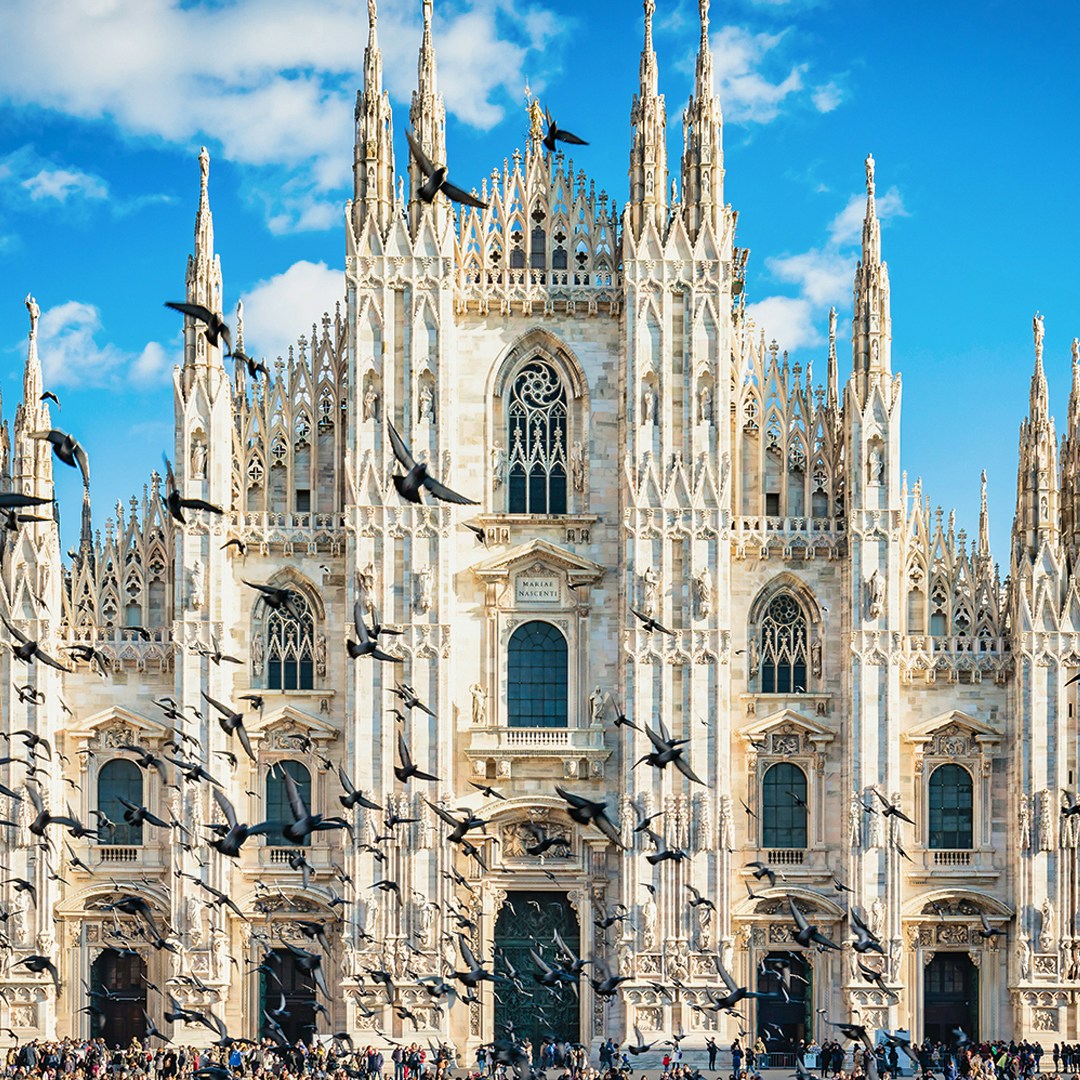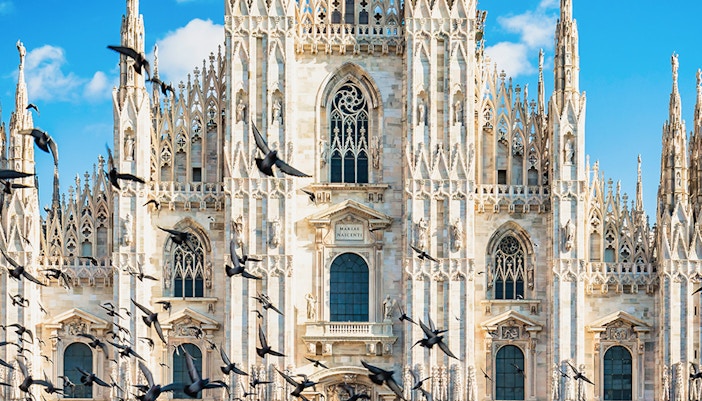The first thing that catches your attention when you step into the Duomo is the colonnade of hefty pillars that reach toward the ceiling. The cathedral has five broad naves, including the wings, that are divided by rows of 40 pillars measuring an astonishing 78 feet (24m) in height and 8 feet (2.5m) in diameter. The pillars are made of solid brick and covered generously with marble donated by Gian Galeazzo Visconti, the then-duke. The capitals of the pillars are richly decorated, each with eight statues on it, with two to three circles of smaller statues and embellishments. The pillars are fused at the top of the cathedral's ethereal groin vaults that are lined with ornate carvings.
Explore What's Inside the Duomo Milan

















